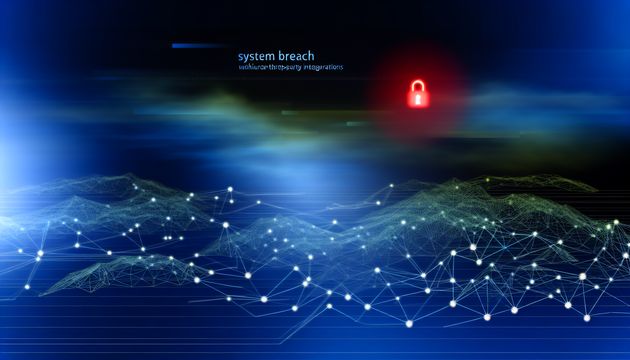
MathWorks Ransomware Attack: A Wake-Up Call for Cybersecurity
The recent ransomware attack on MathWorks has sent ripples through the tech community, particularly affecting users of MATLAB, a tool integral to engineering and scientific computations. With over five million users globally, the disruption of MATLAB services has highlighted the vulnerabilities even well-established companies face in the digital age. The attack led to a significant outage, locking down the licensing center and preventing users from acquiring new licenses, as reported by The Register. This incident underscores the critical need for robust cybersecurity measures and effective incident response strategies.
Disruption to Core Services
The ransomware attack on MathWorks has significantly disrupted its core services, particularly affecting MATLAB, the company’s flagship product. MATLAB is a critical tool used by over five million individuals globally, including commercial customers and STEM students. The attack led to a prolonged outage, severely impacting users who rely on MATLAB for engineering data analysis and other computational tasks. As reported by The Register, the licensing center was locked down, preventing users from acquiring new licenses, which in turn hampered ongoing projects and research activities.
Impact on MATLAB Users
The unavailability of MATLAB’s services has had a cascading effect on various sectors. Engineering firms, academic institutions, and research organizations have all felt the impact. An IT manager from an engineering company highlighted the struggle to acquire new paid-for licenses, which was crucial for project continuity. This disruption underscores the dependency of many sectors on MATLAB for critical operations.
Recovery Efforts and Challenges
MathWorks has been actively working to restore its services, with the assistance of cybersecurity experts. Imagine a bustling city suddenly plunged into darkness; that’s how users felt when MATLAB went offline. The company has managed to bring many systems back online, but full recovery remains a challenge. As of the latest updates, several applications and services are still offline or experiencing degraded functionality. The ongoing recovery efforts are crucial to restoring normalcy for users who depend on MATLAB for their daily operations.
Communication and Transparency
Throughout the incident, MathWorks has faced criticism regarding its communication strategy. Initially, the company provided limited actionable information, leading to frustration among users. It wasn’t until later that MathWorks confirmed the ransomware attack and began issuing more detailed updates. This delay in communication highlights the importance of transparency and timely information dissemination during cybersecurity incidents.
User Feedback and Concerns
Users have expressed concerns over the lack of timely updates and actionable information during the initial stages of the incident. Many relied on MathWorks’ status page for updates, which initially failed to provide clarity on the situation. This lack of communication exacerbated the challenges faced by users, particularly those in time-sensitive environments such as research and development.
Financial and Operational Impact
The ransomware attack has not only disrupted services but also posed significant financial and operational challenges for MathWorks. The inability to process new licenses and the downtime of critical applications have likely resulted in revenue losses. Additionally, the resources allocated to recovery efforts and cybersecurity measures represent an unforeseen financial burden.
Long-term Implications
The attack may have long-term implications for MathWorks, including potential reputational damage and loss of customer trust. The incident serves as a stark reminder of the vulnerabilities that even well-established companies face in the digital age. Moving forward, MathWorks may need to reassess its cybersecurity strategies and invest in more robust measures to prevent future incidents.
Lessons Learned and Future Preparedness
The MathWorks ransomware attack offers valuable lessons for other organizations in terms of preparedness and response strategies. It underscores the importance of having a comprehensive incident response plan and the need for regular cybersecurity audits and updates.
Strengthening Cybersecurity Measures
Organizations can learn from MathWorks’ experience by strengthening their cybersecurity measures, including regular vulnerability assessments and employee training programs. Investing in advanced threat detection and response solutions can also help mitigate the impact of future attacks.
Importance of Incident Response Plans
Having a well-defined incident response plan is crucial for minimizing the impact of cyberattacks. Such plans should include clear communication strategies, roles and responsibilities, and recovery procedures. Regular drills and simulations can help ensure that all stakeholders are prepared to respond effectively in the event of an incident.
Industry-Wide Implications
The MathWorks incident is part of a broader trend of increasing ransomware attacks across various industries. As highlighted in the Intel 471 blog, ransomware and extortion-related breaches continue to be dominant threats. The professionalization of ransomware, with organized groups offering ransomware-as-a-service (RaaS), has expanded the scale and impact of such attacks.
Sector-Specific Vulnerabilities
Different sectors face unique vulnerabilities that make them attractive targets for ransomware attacks. For instance, the manufacturing industry, as reported by Red Piranha, is heavily impacted due to its reliance on uninterrupted operations and legacy systems. Similarly, the construction and business services sectors are also at risk due to their infrastructure dependencies and third-party service relationships.
Collaborative Efforts for Cybersecurity
Addressing the ransomware threat requires collaborative efforts across industries and sectors. Sharing threat intelligence, best practices, and resources can help organizations better defend against cyber threats. Additionally, partnerships with cybersecurity firms and law enforcement agencies can enhance incident response capabilities and facilitate the recovery process.
In conclusion, the MathWorks ransomware attack highlights the critical need for robust cybersecurity measures and effective incident response strategies. As ransomware threats continue to evolve, organizations must remain vigilant and proactive in safeguarding their digital assets and ensuring business continuity.
Final Thoughts
The MathWorks ransomware attack serves as a stark reminder of the evolving threats in the cybersecurity landscape. As organizations increasingly rely on digital tools, the importance of having comprehensive incident response plans and robust cybersecurity measures cannot be overstated. This incident not only disrupted services but also posed significant financial and operational challenges for MathWorks, potentially leading to long-term reputational damage. As highlighted by Intel 471, the professionalization of ransomware continues to expand the scale and impact of such attacks. Collaborative efforts across industries, sharing threat intelligence, and investing in advanced cybersecurity solutions are crucial steps forward.
References
- The Register. (2025, May 27). MathWorks ransomware attack leaves users on deadline. https://www.theregister.com/2025/05/27/mathworks_ransomware_attack_leaves_on_deadline/
- Intel 471. (2025). How ransomware may trend in 2025. https://intel471.com/blog/how-ransomware-may-trend-in-2025
- Red Piranha. (2025). Threat intelligence report: May 20 - May 26, 2025. https://redpiranha.net/news/threat-intelligence-report-may-20-may-26-2025



